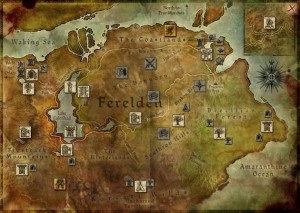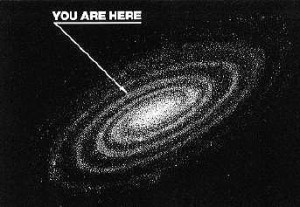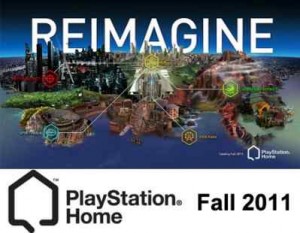The Long Road
by NorseGamer, HSM Publisher
Home, as a virtual world, has some remarkable features in it – made all the more special by the fact that the architecture upon which it runs was originally envisioned for a concept that had its genesis two console generations ago.
One noticeable absence, however, is the lack of any sort of overworld map GUI. And, indeed, this makes sense; with a multitude of different developers constantly creating new scenes to explore, any sort of overworld map depicting navigation from one scene to the next would have to constantly be redrawn and expanded upon. It’s one thing when you have a master-planned world with one developer contributing content to it; it’s quite another when you have to build a platform that has dozens of chefs in the kitchen.
And yet.
There’s no question that a desire remains on the part of the user base to go into a Home that feels like an interconnected world. The Home Navigator, although serving as a functional interface, actually breaks the reality of the immersion and reminds the user that Home is nothing more than a loose collection of stand-alone scenes.
Only a couple of times has Home managed to feel somewhat interconnected. Longtime users may recall the earlier days of open beta, when the tile GUI allowed a user to quickly navigate the “world” of Home, at the expense of not providing any information about the individual scenes therein. The other time when Sony made a semi-concerted effort was the deployment of the Hub, along with the concept of genre-segregated districts. For the first time, promotional art (under the “Reimagine” banner) portrayed Home as an actual world, which was reinforced at the scene level by quick-navigation options to interrelated SCE scenes.
In more recent days, a third attempt at making Home feel more interconnected has been successfully achieved by Lockwood, with their LKWD Life loyalty program. Lockwood is one of the few Home developers (indeed, perhaps the only one) which has a sufficiently large footprint in Home to pull off that sort of interconnectivity, and the results have been spectacularly successful for them.
But still. How much more compelling – indeed, how much easier to comprehend – would Home have been, at the onset, if there was some sort of overworld navigation GUI?
Look, this is clearly a fanciful wishlist article. I’ve spent enough time with the HDK to recognize some the technological and production hurdles involved in creating (and, worse, maintaining) such an undertaking. Nor am I going to spend the words required to outline how I think such a thing could be pulled off; something like that is done with enormous cost involved, and really needs to be implemented at the very beginning of the design phase.
From a high-level consumer viewpoint, though, imagine if you’d encountered an overworld navigation GUI the first time you stepped into Home. Even if it was something as rudimentary as an adaptation of a Final Fantasy sphere grid – denoting locations instead of skills – it would achieve the subtle effect of making Home feel more like an interconnected world. And when a world feels more interconnected to the end user, the user in return feels that what they do within the world matters. This is frankly critical to driving long-term user engagement.
The other benefit to an overworld GUI is discoverability. In the current Home Navigator interface, unless your content is featured, it can sometimes require multiple clicks and scrolling to locate a particular scene or store. From a design standpoint, the goal should be to flatten the number of clicks required to discover content; this promotes user monetization and user retention.
 Overworld GUI systems don’t have to be particularly graphically robust. Traveling between destinations in Dragon Age: Origins, to name one example, isn’t exactly a deeply engrossing experience. Nor is it necessary (or feasible) to seamlessly transition from one scene to another scene. Home isn’t built that way. But I do sometimes genuinely wonder if Home would have benefited considerably from some kind of overworld interconnectivity, even with the mountains of extra work required (for Sony to sustain it and for developers to hook their content into it).
Overworld GUI systems don’t have to be particularly graphically robust. Traveling between destinations in Dragon Age: Origins, to name one example, isn’t exactly a deeply engrossing experience. Nor is it necessary (or feasible) to seamlessly transition from one scene to another scene. Home isn’t built that way. But I do sometimes genuinely wonder if Home would have benefited considerably from some kind of overworld interconnectivity, even with the mountains of extra work required (for Sony to sustain it and for developers to hook their content into it).
For Home, obviously, such feature-request wishlisting is way too late. But it’s a foregone conclusion that Home will not be SCE’s last attempt at a virtual MMO world. Even if the next attempt takes place years (or decades) from now, I do hope Home’s spiritual successor, whenever it comes about, will incorporate some type of this feature as part of its master plan.
Share
| Tweet |




 LinkedIn
LinkedIn Twitter
Twitter
Agreed. Sometimes it is as much about the getting there, as it is being there.
:^/ I’ve given this one a lot of thought, trying to do it justice. You’re correct that most games that have any degree of sophistication will have a map of sorts to allow the player to navigate to whichever area he wishes. The Navigator GUI Home uses now is more akin to a computer’s Directory Tree, with files sorted by type. It’s possible to memorize where everything is, but it doesn’t create the image of a world.
Most of the old PS2 games I recall had maps. Even the groundbreaking ICO, which had no map, still used the game’s camera to show the castle as a whole as the characters continued their journey. One was able to look back at areas that had already been completed, and glimpse at areas that have not been visited yet. And the whole thing felt like one whole because the player was able to see it that way.
I agree that whatever successor there may be for Home would benefit from a map or other overall architectural cohesion made if feel interconnected.
Having said that, it would also benefit from some way to navigate to whatever fanciful realm separate developers may dream up. The Sodium Teleport spheres, Star Trek transporter pads, or the Doctor Who TARDIS would do well here, or their Home-grown equivalient. Then our imaginations would be the limit, regarding Home’s potential.